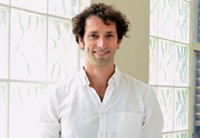Advertisement
Grab your lab coat. Let's get started
Welcome!
Welcome!
Create an account below to get 6 C&EN articles per month, receive newsletters and more - all free.
It seems this is your first time logging in online. Please enter the following information to continue.
As an ACS member you automatically get access to this site. All we need is few more details to create your reading experience.
Not you? Sign in with a different account.
Not you? Sign in with a different account.
ERROR 1
ERROR 1
ERROR 2
ERROR 2
ERROR 2
ERROR 2
ERROR 2
Password and Confirm password must match.
If you have an ACS member number, please enter it here so we can link this account to your membership. (optional)
ERROR 2
ACS values your privacy. By submitting your information, you are gaining access to C&EN and subscribing to our weekly newsletter. We use the information you provide to make your reading experience better, and we will never sell your data to third party members.
Biotechnology
Ethical questions about using recombinant DNA technology were unavoidable at Asilomar
Coordinators recall how the landmark science conference took direction from powerful voices in the wings
by Rick Mullin
August 27, 2018
| A version of this story appeared in
Volume 96, Issue 34

The 1975 International Conference on Recombinant DNA Molecules held at the Asilomar Conference Center in California has cast a long shadow. Groundbreaking at the time, the meeting of scientists to develop guidelines on DNA research remains the template for forums on the safe and ethical use of biotechnology.
COVER STORY
Ethical questions were unavoidable at Asilomar
“We wanted at Asilomar to bring together largely the science community because we were not planning to deal with some of the bigger issues that come up around genetic modification,” such as defense security and social justice, says biologist David Baltimore, former president of California Institute of Technology and one of the meeting organizers.
“We really were looking at safety issues, and we felt the community with the expertise to do that was the scientific community,” Baltimore says. His partner in organizing the meeting was Paul Berg, professor emeritus of biochemistry at Stanford University. The meeting was sponsored by the U.S. National Institutes of Health and the National Academies of Sciences, Engineering & Medicine.
Baltimore and Berg continue to be involved in similar conferences, notably the National Academies’ 2015 summit on genome-engineering ethics, a gathering where the focus was on ethical deployment of the technology and where social scientists, ethicists, and others were represented as well as genomics researchers. The spirit of that summit and other recent meetings, Baltimore and Berg say, has been the spirit of 1975.
Ethical considerations were, in fact, unavoidable at Asilomar.
“There were bioethicists at the time—people calling themselves that,” says Baltimore of philosophers and others dealing with ethical questions in the early days of biotechnology. “And there was a literary tradition, going back to Aldous Huxley,” author of “Brave New World,” a dystopian novel featuring a society of genetically modified citizens. Baltimore also notes the significance of Mary Shelley’s “Frankenstein,” a classic novel on scientific transgression and its consequences, which was published 200 years ago.

Berg notes that a handful of the 150 attendees at Asilomar were not research scientists. Several lawyers were there, as well as 16 journalists from publications including Nature, the New York Times, and Rolling Stone magazine. Also in the mix was at least one professional ethicist—Dan Singer, working at the time for the Institute of Society, Ethics & Life Science.
“Many people would say it was the ethicists that turned the table of the final decision at Asilomar,” Berg says. “Up until the last night, the scientists there were inclined to say, ‘Let’s just go ahead and do it.’ ” Then the lawyers and ethicists “essentially got up and read the riot act,” and people started discussing the possible consequences of things going wrong in the lab, Berg recalls. “The next morning, suddenly almost everybody opposed to any kind of regulation, any kind of guidelines, voted to impose these guidelines on themselves.” He estimates that 95% of attendees voted in favor of guidelines.
Baltimore says the science community has become increasingly interested in the nontechnical aspects of how their work impacts society. “But I also think most scientists feel those are not questions they should try to answer by themselves,” he says. “We should be taking advantage of the existence of a community of people concerned about this from a different point of view—from the moral and ethical or legal points of view, rather than just scientific.”
Advertisement
Berg agrees that scientists have become increasingly more involved in questions of ethics and social justice. “And it started with Asilomar,” he says.
“Asilomar is where scientists raised the issue about concerns over the work they were doing—safety and ethical. Those have now become part of the game,” Berg says. “We are moving in the direction where science’s intent is always going to be contesting current procedures and standards in society.”





Join the conversation
Contact the reporter
Submit a Letter to the Editor for publication
Engage with us on Twitter